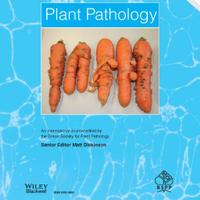
British Society for Plant Pathology
@bs_pp
Championing global plant health 🌿 | Research, education & policy in plant pathology | Est. 1981 | #PlantScience | 📍UK-based
ID: 910255826
http://www.bspp.org.uk 28-10-2012 13:01:25
9,9K Tweet
11,11K Takipçi
2,2K Takip Edilen


🌱 Plants are a vital source of food & nutrition. Yet, the destruction of natural habitats & ecosystems has left both plants & human well-being at risk. Monday is International #PlantHealthDay. via Food and Agriculture Organization fao.org/plant-health-d…











We're hiring! Join the Plant Pathology journal as a freelance Technical Reader. Part-time, flexible hours buff.ly/xQFpkLF Apply by 15 July to [email protected] #EditingJobs #PlantPathology #AcademicPublishing #Freelance






















